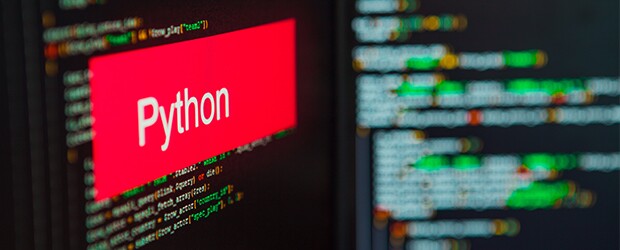Python might sound as frightening as its namesake, but don’t worry. It can actually be the tool that sets you on a new career path. With more data available than ever before, there’s a real need for professionals who understand how to use today’s technology.
That’s why a Python and R prep course is an essential part of the Online Master of Science in Business Analytics (MSBA) program at Seattle University. Students learn the basics of these programs before learning how to apply them to data analytics. Tools like Python are essential for smart, data-driven businesses, the same ones looking for graduates who know how to integrate today’s powerful analytical tools with expert business acumen. But first you’ll need to know what Python is.
Why We Use Python
First, Python is just one of many programming languages. Much like Java or C, Python has the ability to perform a multitude of functions, but it has become particularly popular for business analysts and data scientists.
But why Python in particular? First, it’s a much more straightforward “language” to use than others. Its syntax is more similar to how people actually speak than other lower-level programming languages. When the program is written into the code, it also runs it, meaning it’s able to make numerous important decisions while establishing complex parameters. This makes it easier to catch errors, because with other languages, programmers need to have that established ahead of time.1
Python is easy for amateurs to pick up and put to use. The program is built to work for a number of different uses, and even in beginner projects, you won’t need a computer science degree to make it through. Python also requires fewer lines of code to perform an action, in spite of the fact it’s flexible enough to complete many different applications.
In summary, building in Python means saving time and money in data construction, reinforcing its popularity in business analytics circles. Nearly 90 percent of data scientists use Python in their current jobs, while more than 60 percent of data science jobs include a Python mention.2
What is pandas?
To understand Python, it’s essential to understand the community that’s built around it. Launched nearly 30 years ago, Python is an open-source program, meaning anyone can get into the code to make updates or adjust the function.
Python is able to simplify the work process by using several devices to store and rapidly bring back lines of code. Those chunks of code are divided up into modules (a single Python file), packages (denoted collection or directory of modules), and libraries (both modules and packages that are similarly coded). These modules act as the building blocks of the language, while the packages use these blocks to complete common but complicated functions.
This is where the dedicated community helps set Python apart: In addition to its standard library, Python has many more libraries that meet different needs of different programmers. For example, pandas, Matplotlib, and Requests are useful tools in understanding datasets, data visualization, machine learning, and artificial learning:
- Pandas: Ideal for data scientists, this library tries to make massive, structured data sets easier, faster, and more natural to work with3
- Matplotlib: For those who need to translate and share data and its value to others, this library creates publication-quality visuals from complicated data4
- Requests: Need to send HTTP/1/1 requests? This library automates the creation of query string to transmit data in a URL5
For those on the outskirts of the programming world, being able to easily pull modules, packages, and libraries is a massive help along the community of developers and programmers who are happy to offer support.
Reading the Program (and the Room)
Chances are, most are more familiar with programs like Microsoft Excel and Google Sheets to help them analyze data. While useful for many tasks and easily available, both programs tend to be too limited in their functionality, both in terms of handling large sets of data and in creating charts and data visualization. This is where programming languages like Python can come in, and help make the case for data as a true business tool.
Seattle University’s Online MSBA program provides students with strong communication and visualization skills, because it’s essential for a business leader to be able to share their strategies and effectively communicate their importance.
Embracing Python is one of the first steps to being an action-oriented leader. At Albers, students will learn additional programming tools like R, Apache Hadoop and Spark, and SQL that will help set them on the road to success. Those technical skills are the starting point to understanding, interpreting, and acting on data analysis. Learn more about the programming and analytical skills students gain in our online curriculum.
- Retrieved on February 21, 2020, from medium.com/@haydnjmorris/page-2-dynamically-typed-vs-statically-typed-languages-e507ac463496
- Retrieved on February 21, 2020, from techrepublic.com/article/why-python-is-the-real-language-of-data-science-not-r
- Retrieved on February 21, 2020, from pypi.org/project/pandas
- Retrieved on February 21, 2020, from matplotlib.org
- Retrieved on February 21, 2020, from 2.python-requests.org//en/master/user/quickstart


